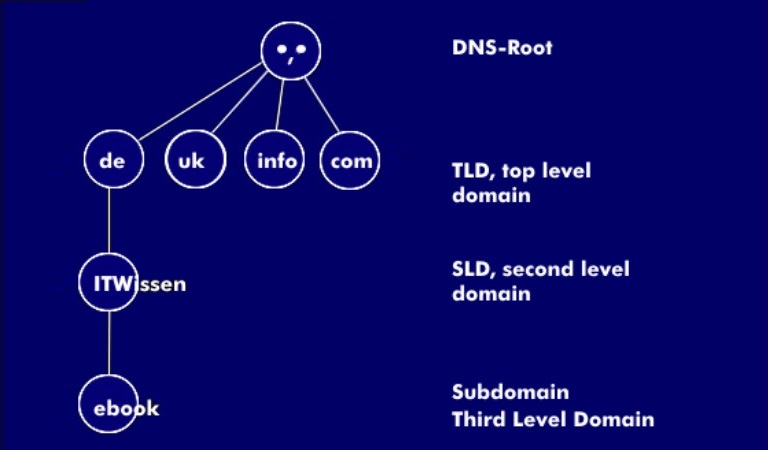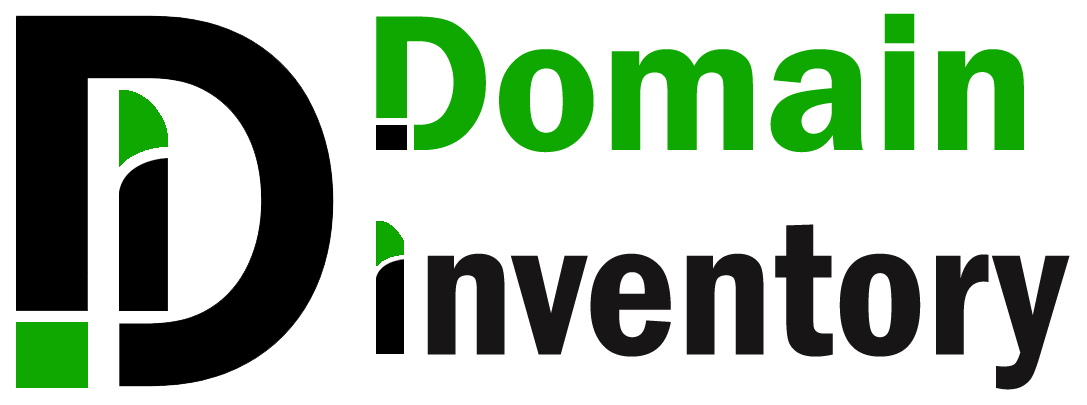Buying a website domain is crucial in building an online presence for yourself or your business. Your domain name is not only the address people will use to find your website, but it also serves as your online identity. Choosing the right domain name is essential to building a strong online brand and increasing your website’s visibility in search engine results.
But with so many domain registrars and options available, it can be difficult to know where to begin. This blog post will guide you through how to buy a website domain, starting with choosing the right domain registrar. We’ll discuss the factors you should consider when selecting a registrar, including pricing, customer support, and additional services offered.
Next, we’ll cover the steps in choosing the perfect domain name for your website. We’ll explain the key factors to consider, such as domain extensions, length, and brandability. Also, provide tips on conducting a domain name search to ensure your chosen name is available and doesn’t infringe on any existing trademarks. We’ll explain the technical aspects involved, such as DNS settings and website hosting, in simple terms to make the process easy to understand for beginners.
By the end of this post, you’ll have all the information about how to buy a website domain to confidently purchase a website domain and start building your online presence. So, let’s dive in and get started!
What is a Domain Name?
A domain name is an address that people use to access your website on the internet. It is a unique name identifying a website and its associated pages. A domain name consists of two main parts – the domain and the top-level domain (TLD). The domain is the website’s name, and it can be anything from a business name to a keyword related to the website’s topic. For example, Amazon.com, Google.com, and Facebook.com are all domain names. The domain name should be easy to remember and relevant to the website’s purpose.
The TLD is part of the domain that appears after the domain name, such as .com, .org, .net, etc. TLDs are categorized into two main types: generic (gTLDs) and country-code (ccTLDs). Some popular gTLDs include .com, .org, .net, .info, and .biz, while ccTLDs are used for specific countries, such as .uk for the United Kingdom, .ca for Canada, and .au for Australia. Domain names are essential for websites because they provide an easy-to-remember and recognizable name that users can use to find the website. Without a domain name, users would have to use the website’s IP address, a series of numbers that are difficult to remember. Domain names make it easy for users to remember a website’s name and access it easily.
What Are Essentials for Buying a Domain Name?
You must first register a domain name with a domain name registrar to obtain a domain name. Domain name registrars are companies that manage the reservation of domain names and allocate them to website owners. They are accredited by the Internet Corporation for Assigned Names and Numbers (ICANN) and follow specific guidelines for domain name registration. When registering a domain name, you must provide personal information, such as your name, address, email address, and phone number. This information is then used to register the domain name and made public in the WHOIS database, which is a directory of all registered domain names.
Domain names can be registered for a period of one to ten years, and registrants must renew their domain registration before it expires. If a domain name registration expires, it becomes available for anyone else to register, and the previous registrant loses control of the domain name. In addition to registering a domain name, website owners can also purchase additional services to enhance their domain name’s functionality and security. For example, website owners can purchase domain privacy, which hides their personal information from the WHOIS database, protecting them from spam and other unwanted communication.
Website owners can also purchase SSL certificates, which provide encryption and security for website visitors. SSL certificates are essential for e-commerce websites that process sensitive information like credit card numbers.
How Much Does a Domain Name Cost?
The cost of a domain name can vary depending on several factors such as the extension, availability, and registrar.
The most familiar domain extension, .com, typically costs between $8 and $15 per year, while some of the newer extensions such as .app or .store, can cost up to $20-$30 per year. Country code domains, such as .us or .co.uk, can also vary in price depending on the registry.
The availability of a domain name can also affect its cost. If the domain name you want is registered, you may have to pay a premium to purchase it from the current owner. Premium domain names can cost anywhere from a few hundred dollars to several thousand dollars or even more, depending on the popularity and marketability of the name.
The registrar from which you choose to purchase your domain name can also impact the price. Some registrars offer promotional discounts or bundle packages that can reduce the cost of your domain name. Additionally, some registrars may charge additional fees for services such as domain privacy or domain forwarding.
It’s important to note that the cost of a domain name is typically an annual fee, meaning you will need to renew your domain registration every year to continue using it. If you fail to renew your registration, your domain may be released back into the market and become available for someone else to purchase.
Overall, the cost of a domain name can vary widely depending on several factors, but generally, it is a relatively affordable expense for website owners. Shopping around and comparing prices from different registrars is essential to ensure you get the best value.
Types of Domains

Several types of domains are available for website owners to choose from, depending on their needs and preferences. Here are some of the most common types of domains:
1. Top-Level Domains (TLDs)
Top-level domains (TLDs) are the highest level of the domain name system (DNS) hierarchy. They are used to classify and categorize websites based on their purpose, location, or organization type. TLDs are divided into two main categories: generic (gTLDs) and country-code (ccTLDs).
a. Generic TLDs (gTLDs): Generic TLDs are not associated with any particular country or region. Businesses and organizations often use them to create a global online presence. Some of the most popular gTLDs include .com, .org, .net, .info, and .biz.
b. Country-Code TLDs (ccTLDs): Country-code TLDs are TLDs that are associated with a specific country or region. Businesses and organizations often use them with a local or regional focus. Some examples of ccTLDs include .uk for the United Kingdom, .ca for Canada, and .au for Australia.
2. Second-Level Domains
Second-level domains (SLDs) are the part of the domain name that appears before the TLD. They are often used to create a unique and memorable domain name for a website. SLDs can be any combination of letters, numbers, and hyphens, as long as they are available for registration.
3. Subdomains
Subdomains are a way to organize and structure a website’s content. They are used to create a separate website section or host a specific type of content. Subdomains are created by adding a prefix to the main domain name, such as blog.example.com or shop.example.com.
4. Premium Domains
Premium domains are domain names that are considered valuable and desirable because they are short, memorable, and easy to spell. Domains that are premium are often sold at a higher price than regular domain names, and they are popular among businesses and organizations that want to create a strong online presence.
5. Brandable Domains
Brandable domains are domain names that are designed to be unique, memorable, and easy to remember. Businesses and organizations often use them to create a strong brand identity and differentiate themselves from their competitors. Brandable domains can be any combination of letters, numbers, and words that are easy to pronounce and remember.
6. Exact-Match Domains
Exact-match domains are domain names matching the exact search term users enter into a search engine. Businesses and organizations often use them to target a specific keyword or phrase and improve their search engine rankings. Exact-match domains can effectively generate targeted traffic but can also be overused and perceived as spammy.
7. Internationalized Domain Names (IDNs)
Internationalized domain names (IDNs) are domain names that use non-ASCII characters, such as Chinese, Arabic, or Cyrillic characters. IDNs are designed to make it easier for people to access websites in their native language and improve the global accessibility of the internet.
In short, several types of domains are available for website owners to choose from, each with its own advantages and disadvantages. TLDs are the highest level of the domain name system and are divided into gTLDs and ccTLDs. Second-level domains, subdomains, premium domains, brandable domains, exact-match domains, and IDNs are all popular types of domains used by website owners to create a solid online presence.
How to Choose a Website Domain

Choosing the right domain name is important in establishing your online presence. Here are six factors to consider when selecting a domain name:
Relevance
Your domain name should be relevant to your website’s content and purpose. It should give visitors an idea of your website and what they can expect to find there. For example, if your website is about cooking, a domain name like “CookingTips.com” or “RecipeCorner.net” would be more relevant than a name like “YellowBicycle.com.”
Branding
Your domain name should reflect your brand and help to build brand recognition. It should be easy to remember and should resonate with your target audience. It should also be unique and distinguishable from competitors’ domain names. For example, the domain name “CocaCola.com” is a strong example of a memorable domain name that reflects the brand.
Length
Your domain name should be easy to type and remember, which means keeping it short and simple. Long or complex domain names can be difficult to remember and can result in users needing to remember your web address. Aim for a domain name that is 2-3 words or a maximum of 15 characters.
Keywords
Including relevant keywords in your domain name can help improve your website’s search engine rankings. However, it’s important to use keywords sparingly or use them in a way that appears spammy. For example, the domain name “BestCoffeeShopinSeattle.com” may include relevant keywords but can appear spammy to users and search engines alike.
Domain extension
There are many domain extensions, including .com, .org, .net, and others. While .com is the most popular and recognizable domain extension, it may not always fit your website best. Consider using a domain extension that is more relevant to your website’s purpose, such as .org for non-profits or .edu for educational institutions.
Availability
Choosing a domain name that is available and not already registered by someone else is essential. You can use a domain name registrar to search for and purchase available domain names. If your preferred domain name is not available, you may need to get creative with your choice or consider purchasing it from the current owner.
Pronounceability
When selecting a domain name, it’s important to consider how easily it can be pronounced. A domain name that is easy to pronounce and spell can make it easier for users to remember and share with others. Avoid using words that are difficult to pronounce or spell, as this can create confusion and make it more difficult for users to find your website.
Avoid hyphens and numbers
While it can be tempting to use hyphens or numbers in your domain name to create a unique and memorable URL, this can actually make it more difficult for users to remember and type in. Hyphens and numbers can also make your domain name appear unprofessional or spammy. Aim for a domain name that is simple, easy to remember, and easy to type without the need for special characters.
Avoid Copyright Infringement
Ensure your domain name does not infringe on someone else’s trademark or copyrighted material. Search to ensure that your domain name is unique and not already in use by another company.
Choosing the right domain name requires careful consideration of several factors, including relevance, branding, length, keywords, domain extension, and availability. By considering these factors, you can select a domain name to help establish your online presence and build your brand.
How to Buy a Website Domain in 5 Simple Steps

In today’s digital age, having a website for your business or personal brand is essential. However, securing a domain name before launching your website would be best. A domain name is an address that people type into their web browser to access your website. This article will discuss the steps to buy a domain name.
- Step 1: Choose a domain registrar – A domain registrar is a company that sells domain names. Some popular domain registrars include GoDaddy, Namecheap, and Google Domains.
- Step 2: Search for your desired domain name – Once you have chosen a domain registrar, you can start searching for your desired domain name. You can use the search bar on the registrar’s website to check if the domain name you want is available.
- Step 3: Select your domain name – If your desired domain name is available, you can add it to your cart and proceed to checkout. You may need to choose a different domain name or extension if it’s unavailable.
- Step 4: Choose your registration length – When buying a domain name, you can choose how long you want to register it. You can choose from 1 to 10 years. Keep in mind that longer registration periods may come with a discount.
- Step 5: Complete your purchase – After choosing your registration length, you can complete your purchase by providing your payment information and other necessary details.
Let’s Discuss this Briefly:
1. Choose a Domain Name Registrar
Choosing the right domain name registrar is essential when buying a domain. The registrar will sell you the domain and manage it for you. Some popular domain name registrars include GoDaddy, Namecheap, and Google Domains. Consider pricing, customer support, and user-friendliness when choosing a domain registrar.
2. Search for Your Desired Domain Name
Once you choose a domain registrar, you can search for your desired domain name. Most registrars have a search bar on their website where you can enter your desired domain name and check its availability. If the domain name is already taken, you can try a different extension or come up with a new domain name altogether.
3. Choose the Right Domain Extension
The domain extension is the last part of your domain name, such as .com, .net, or .org. Different extensions have different meanings and are suitable for different types of websites. For example, .com is the most popular extension and is suitable for commercial websites, while .org is suitable for non-profit organizations. Choose an extension that fits your website’s purpose.
4. Register Your Domain Name
After choosing your domain name and extension, you can proceed to register it. You will need to provide some personal information, such as your name, address, and email address. It’s important to provide accurate information as it will be used to manage your domain name.
5. Choose Your Registration Length
When registering your domain name, you can choose how long you want to register it for. Most registrars offer registration periods of 1 to 10 years. Longer registration periods may come with a discount, so consider how long you plan to use your domain name before choosing.
6. Complete Your Purchase
After choosing your registration length, you can complete your purchase by providing your payment information. Most registrars accept credit cards, PayPal, and other payment methods. Once your payment is processed, you will receive a confirmation email with your domain name and registration details.
Steps for Buying a Domain From Another Person
If you want to buy a domain name that is already registered by someone else, you will need to go through a process to acquire it. Here are the steps for buying a domain name from another person:
Step 1: Research the Domain Name
Before you approach the domain name’s current owner, it’s important to do some research to learn more about the domain name and its value. Use domain name valuation tools to get an estimate of how much the domain name is worth, or you can search for similar domain names that have recently sold to get an idea of the market value.
You should also research the domain name’s history to ensure it doesn’t have a negative reputation or is associated with spammy websites. You can use tools like Wayback Machine to see what the website used to look like, and domain reputation services like Spamhaus to check if the domain has been flagged for spamming.
Step 2: Contact the Current Owner
Once you have researched and determined that you want to buy the domain name, the next step is to contact the current owner. You can do this by looking up their contact information in the WHOIS database, or by using a domain name broker service to help you make contact.
When you contact the current owner, you should communicate clearly and professionally. Tell them you want to buy the domain name, and ask if it is for sale. Be prepared to negotiate on price, as the current owner may have their ideas about what the domain name is worth.
When contacting the owner, be polite and professional, and make sure to include the following information:
- Your name and contact information
- The domain name you are interested in buying
- Your offer price (if you have one)
- The reason why you want to buy the domain name
Step 3: Negotiate the Price
When negotiating the domain name’s price, remember the research you did in step 1 to determine its value. Make a reasonable initial offer based on your research, but also be prepared to increase your offer if necessary.
The current owner may have their own ideas about what the domain name is worth, so be prepared to negotiate and find a price that works for both parties.
Step 4: Use a domain name escrow service
Once you have agreed on a price with the domain name’s owner, it’s time to transfer the funds and complete the transaction. To ensure that both parties are protected and the transaction goes smoothly, it’s recommended to use a domain name escrow service.
An escrow service acts as a trusted third party that holds the funds until the domain name has been transferred to the buyer. This helps prevent fraud and ensures that both parties are satisfied with the transaction.
Popular domain name escrow services include Escrow.com, Sedo Escrow, and Payoneer Escrow. Choose a reputable escrow service and follow their instructions carefully to ensure a smooth transaction.
Step 5: Transfer the domain
Once the payment has been made, transferring the domain is time. The transfer process can vary depending on the domain registrar and the seller’s preferred method.
Typically, the seller must unlock the domain and provide you with an authorization or transfer code. You’ll then need to initiate the transfer through your domain registrar and provide the code. Depending on the registrar, the transfer process can take anywhere from a few hours to a few days.
Once the transfer is complete, make sure to update the domain’s contact information and renew it for another year to ensure that you maintain ownership of the domain.
Domain name FAQs
Does the registration of a domain name expire? And what if it expires before I renew it?
Yes, a domain name registration does expire. When you register a domain name, you do so for a certain period, typically one to ten years. When the registration period expires, you must renew your registration if you want to keep your domain name.
Several things can happen if you fail to renew your domain name registration before it expires. The first thing that usually happens is that your website and email will stop working. Visitors to your website will see an error message, and you won’t be able to send or receive email associated with your domain name. This can hurt your business or organization, as you may lose customers or miss essential messages.
After some time, typically 30-60 days after your domain name registration expires, your domain name will enter a grace period. You can still renew your domain name registration during this time, but you may be subject to additional fees. If you don’t renew your domain name during the grace period, your domain name will be placed in a redemption period.
During the redemption period, you can still renew your domain name registration, but you will be subject to additional fees, which can be significant. If you don’t renew your domain name during the redemption period, it will be released back into the public domain, and anyone can register it.
If your domain name is a valuable asset, such as a highly brandable or memorable name, it’s important to renew your registration on time to avoid losing it. Consider setting up auto-renewal for your domain name, which will automatically renew your registration before it expires, so you don’t have to worry about manually renewing it each year.
It’s also important to keep your contact information up to date with your domain name registrar. If your contact information needs to be updated or corrected, you may not receive renewal notices or important information about your domain name registration. Make sure to update your contact information if you change your email address or phone number.
What are the most common top-level domains?
The most common top-level domains are .com, .net, .org, .edu, .gov, and .biz. The .com domain is the most popular and is widely used by businesses and organizations. The .net domain is often used by networking companies and internet service providers. The .org domain is commonly used by non-profit organizations, while educational institutions use the .edu domain. Government agencies use the .gov domain, and businesses use the .biz domain.
Can I change my domain name later?
Yes, you can change your domain name later, but it’s not recommended. Changing your domain name can have a negative impact on your search engine ranking and can confuse your audience. If you must change your domain name, redirect your old domain to your new domain and notify your audience of the change.
What is domain name privacy protection?
Domain name privacy protection is a service offered by domain name registrars to keep your personal information, such as your name, address, and phone number, private and secure. It prevents your personal information from being publicly accessible in the Whois database, which can be accessed by anyone who performs a domain name lookup.
Can I sell my domain name?
Yes, you can sell your domain name to another person or company. You can list your domain name for sale on marketplaces such as Sedo or Flippa or reach out to potential buyers directly. The price of a domain name can vary depending on factors such as its age, length, and popularity.
Conclusion
Buying a domain name is a crucial step in launching a website. It’s essential to choose a domain name that is memorable and easy to type, and reflects the purpose of your website. Additionally, selecting the right domain extension is also essential, as it can impact how people perceive your website. Choosing a reliable domain registrar with excellent customer support is crucial to ensure that you have a seamless and hassle-free experience while buying a domain.
It’s also worth noting that once you purchase a domain, you must renew it periodically to ensure it remains active. Most registrars will send you a reminder before your domain registration expires. It’s essential to renew your domain registration promptly to avoid losing your domain name to someone else.
Finally, it’s essential to protect your domain name by enabling security features such as two-factor authentication and privacy protection. Two-factor authentication adds an extra layer of security to your domain account by requiring a second authentication factor, such as a code sent to your mobile phone. Privacy protection hides your personal information from public domain databases, reducing the risk of identity theft and spam.

